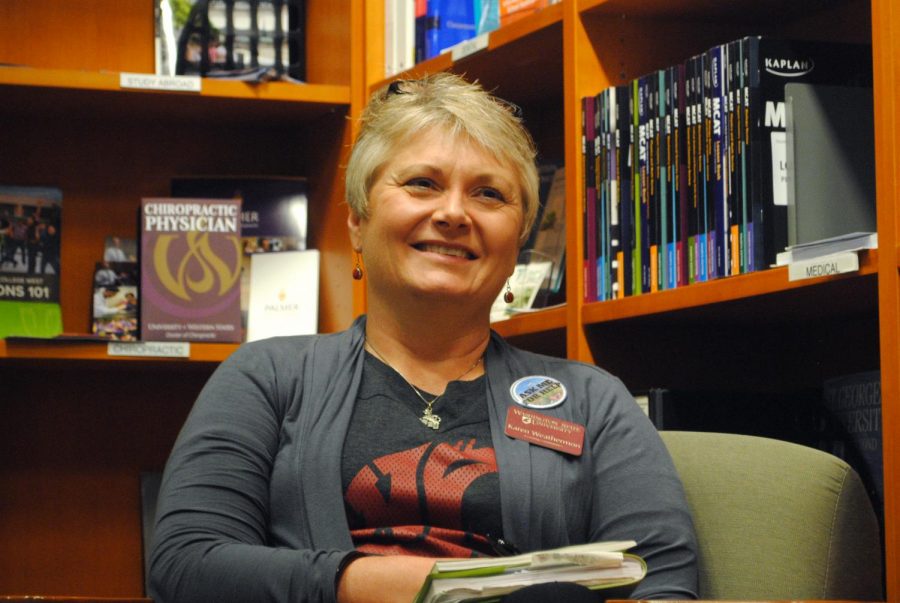Common Reading “Soonish,” not just for STEM
Book delves into emerging technologies with comical approach, colorful comics for everyone
ALYSSA STANFIELD | THE DAILY EVERGREEN
Karen Weathermon, co-director of WSU’s Common Reading Program, discusses the book for this year, called “Soonish.”
September 13, 2018
My initial impression of “Soonish” was that it was another popular science book that I might have picked up in second grade (that is, if it had been around when I was in second grade, as it wasn’t published until 2017).
However, as I read, I realized this impression came solely from the comics that are scattered throughout the book, which actually lend delightful bits of humor to an otherwise explanation-intensive text.
Kelly Weinersmith, a parasitologist and adjunct assistant professor at Rice University, co-authored the book with her husband, cartoonist Zach Weinersmith.
I was afraid that the Weinersmiths would sacrifice accurate explanations of scientific concepts in order to make the book accessible to a wide variety of readers. As it turns out, I had no reason to fear.
The couple could have easily taken the science out of the scientific advancements, but they worked hard to use wit and many interesting (or darkly humorous) analogies to explain some complex technologies.
My next fear developed as I began reading. The book seemed catered to uber science nerds, like myself. Given that the university selected “Soonish” as the common reading for this school year, I was concerned that non-STEM majors had been cheated out of a book that would interest them in their academic focus.
Weinersmith explained that the book should be engaging for undergraduates pursuing a variety of majors.
“Our interest [was] in trying to figure out how people from any field could get involved in technological advances, and not just specifically STEM people,” she said. “There’s a major role for artists [in augmented reality] and for storytellers.”
Hopefully, if a brave non-STEM student is able to read the book in its entirety, they will find inspiration for advancements that they could contribute to – not just ones in science or technology.
Karen Weathermon, co-director of WSU’s Common Reading Program, described the desired outcome of using “Soonish” as the Common Reading. The committee’s theme for the book this year was innovations in health, science and society.
“We’re trying to use the framework of the book in a broader format than just the 10 technologies of [the book],” Weathermon said. “Cutting-edge things are happening all across the university, and [our programming] is highlighting ‘Soonish’ innovations across all fields.”
Though WSU recommends “Soonish” for every student, I recommend the book mainly to students with a scientific mindset. Even so, I agree that someone who wants to innovate in their field could find inspiration among the pages of the book, even if it doesn’t come from the technology specifically discussed.
I found it difficult to sit down and read it for enjoyment because I continually had to think scientifically (or “turn on my science brain,” if you will) to understand some of the explanations.
“Soonish” was an enjoyable and intriguing read, but I wouldn’t have decided to read it had the university not chosen it as the common reading. If I wasn’t deeply interested in science, I probably wouldn’t have chosen to read it at all.
As the Common Reading Selection Committee divulges some of the programming related to “Soonish,” I hope that they will explain to students that it is the form, not the scientific content, of the book that is important, as Weathermon repeatedly explained.
Simply knowing that it is required reading for History 105 is not enough motivation for a student to read “Soonish” and reflect on how they could make advancements in their chosen discipline.
Overall, “Soonish” is a solid read written by humorous and knowledgeable authors and was an interesting choice on behalf of the committee, despite its strong focus on STEM.






















